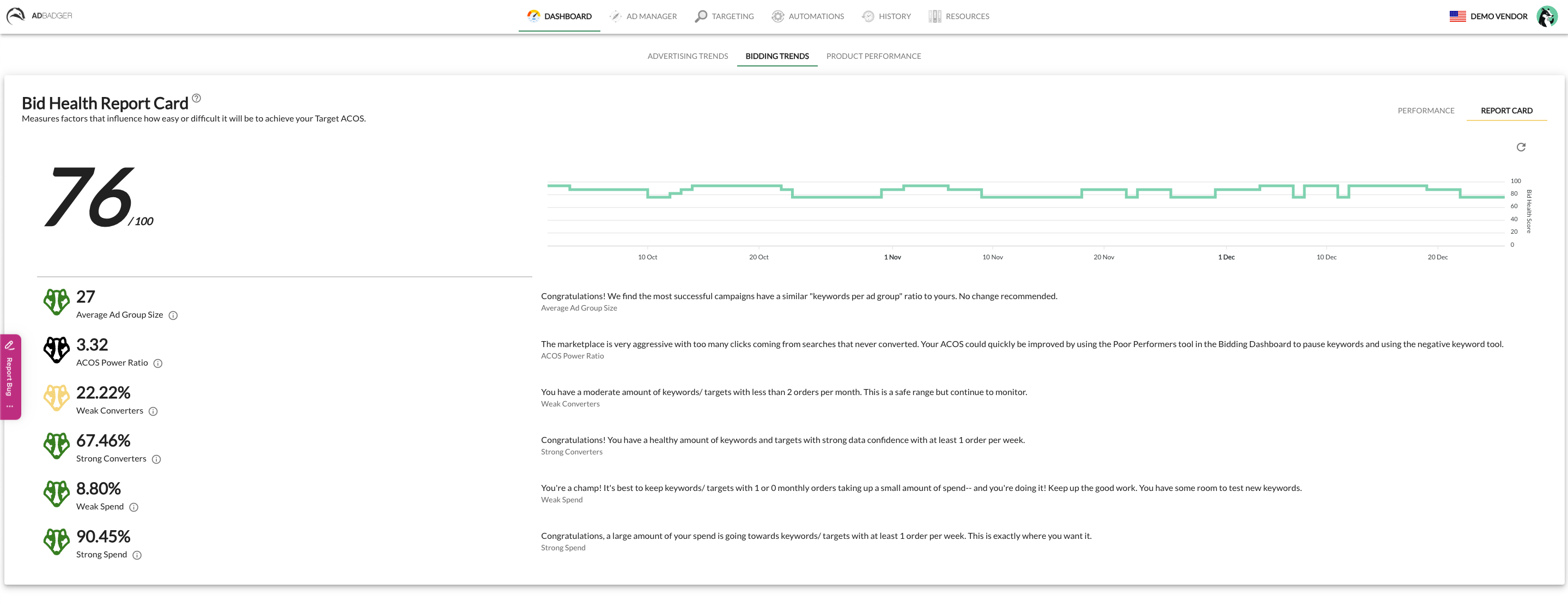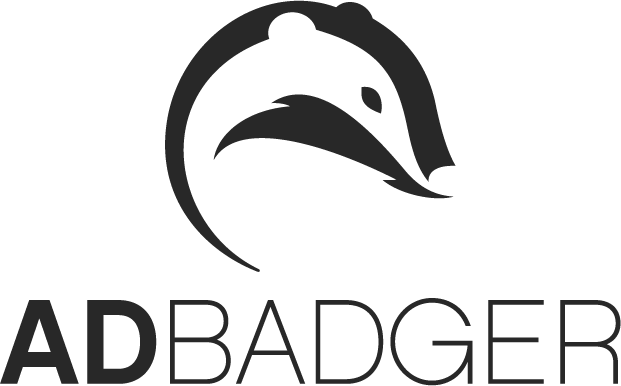
Within the Dashboard under the Bidding Trends section, specifically in the Report Card tab, you'll come across our Bid Health Report Card feature. The initial focal point on your Bidding Report Card is a comprehensive grade. This overarching grade is derived from a weighted average encompassing various categories. These categories are designed to evaluate factors that play a role in determining the feasibility of achieving your Target ACOS.
What makes the Bid Health Report Card particularly valuable is its capacity to provide actionable insights. The Bid Health report card meticulously evaluates six distinct metrics, assigning a final health score. Each metric serves as a valuable indicator of your campaign's health, influencing your ability to achieve the desired Target ACOS. The Badger, our intelligent system, offers tailored suggestions for actions to undertake within your marketplace, leveraging the specifics of each individual score. This feature not only provides an overall assessment but also empowers you with actionable recommendations, contributing to a more informed and effective bidding strategy.
The first metric delves into the average ad group size, aligning with Amazon's best practice recommendation of maintaining 35 or fewer keywords per ad group. This guideline is designed to bring companies closer to their target ACOS. Although having more keywords is possible, it often leads to challenges like keyword starvation. Notably, a large ad group tends to be correlated with a poorer ACOS, emphasizing the significance of ad group size in campaign performance.
The acos power ratio, our second metric, gauges the aggressiveness of your testing strategy. It calculates the ratio of the overall account ACOS to the ACOS of search terms with at least one order. For instance, if your account ACOS is 50% but the ACOS for orders with all searches is only 10%, resulting in a ratio of 5, it indicates an overly aggressive approach. A higher ratio prompts a reevaluation of keywords, potentially necessitating the addition of negatives or pausing certain keywords. This ratio might be elevated in scenarios with extensive broad or automatic targeting paired with numerous exact match or ASIN targeting.
Proceeding to the next two metrics, we assess low-converting keywords and targets, considering both the quantity and spending associated with them. This insight helps identify items or keywords with lower conversion rates, serving as a warning against excessive spending on less fruitful endeavors. Simultaneously, the metrics reveal strong converters, enabling you to allocate resources more effectively.
The last two metrics, weak spend and strong spend, provide insights into the effectiveness of your spending strategy, indicating areas where adjustments may be beneficial for optimizing returns.
By consolidating these metrics, the Bid Health report card generates personalized recommendations. These insights, coupled with the capabilities of the Poor Performers tool, empower you to strategically pause underperforming elements and refine your entire account for enhanced performance.
Common Questions:
1. The bid health report card is refreshed daily
2. The bid health report card uses data on low converting spend from the past 7 days
For a more in-depth exploration and practical examples, we invite you to watch our informative video:

